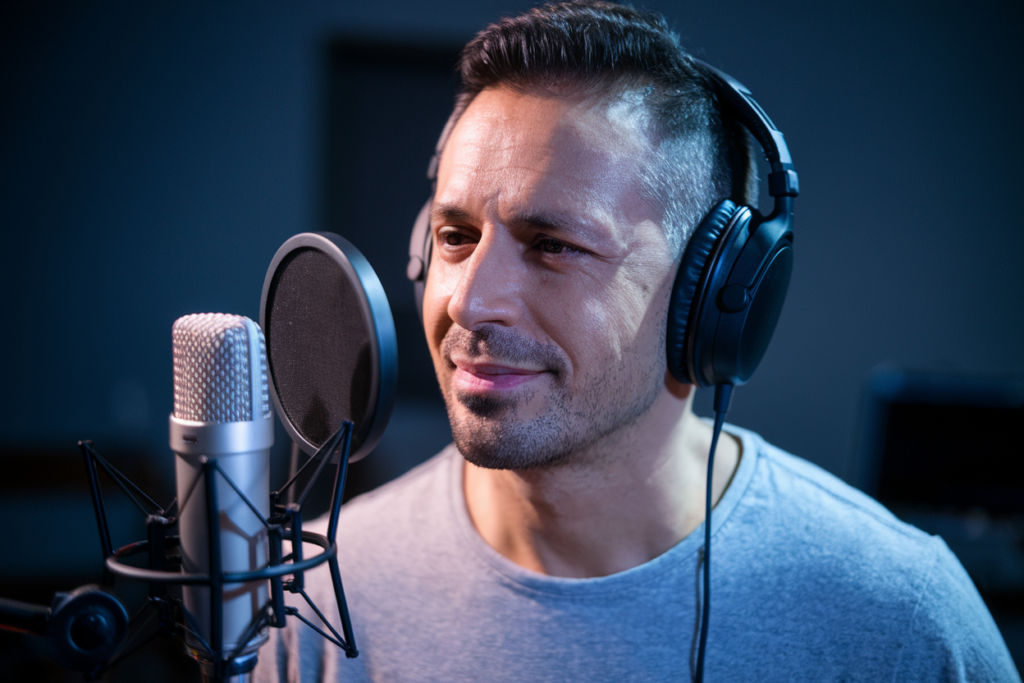Key Takeaways
- Importance of Speech Recognition: Converting Turkish speech to text enhances communication and accessibility across various sectors, including education, healthcare, and media.
- Technological Advancements: The use of machine learning and AI significantly improves the accuracy and efficiency of Turkish speech recognition, adapting to different accents and dialects.
- Applications Across Fields: This technology streamlines tasks for students during lectures and professionals in meetings, allowing them to focus on content rather than manual note-taking.
- Accessibility Benefits: Converting spoken language into written form provides crucial support for individuals with hearing impairments, fostering inclusivity in communication.
- Challenges Faced: Linguistic complexities inherent in the Turkish language, such as agglutination and regional dialects, pose challenges that impact transcription accuracy.
- Future Trends: Ongoing advancements in AI promise even greater improvements in speech recognition capabilities, enabling seamless integration with other technologies like real-time translation.
Ever wondered how to effortlessly convert Turkish speech to text? Whether you’re a student, a professional, or just someone looking to streamline your note-taking, turning spoken words into written form can save you time and improve accuracy.
Overview Of Converting Turkish Speech To Text
Converting Turkish speech to text involves transforming spoken language into written form, facilitating various applications across different fields. This process leverages advanced technologies like automatic speech recognition (ASR) systems, which are designed to accurately transcribe spoken words in real-time.
Utilizing this technology offers significant advantages for students and professionals alike. You can enhance your note-taking efficiency by capturing lectures or meetings directly as text, minimizing the risk of missing important information. The accuracy of such systems continues to improve, making them reliable tools for anyone looking to streamline their workflow.
Various software solutions exist that specialize in Turkish speech recognition. These programs often incorporate machine learning techniques to better understand nuances in pronunciation and dialects within the Turkish language. By selecting a solution tailored for your specific needs, you can achieve optimal results.
In addition to personal productivity, converting Turkish speech to text plays a vital role in accessibility. It empowers individuals with hearing impairments by providing them access to spoken content through readable text formats. This inclusivity fosters better communication and understanding across diverse audiences.
The ongoing advancements in artificial intelligence further enhance these capabilities, ensuring that you stay at the forefront of efficient communication methods. As technology progresses, so does the potential for more sophisticated applications like real-time translation or integration with voiceover projects where clarity is crucial.
By embracing this innovative approach, you’re not just saving time but also improving overall comprehension and engagement with spoken material—whether it’s during a presentation or an online course.
Importance Of Speech Recognition Technology
Speech recognition technology plays a crucial role in converting Turkish speech to text, making it an invaluable tool for various users. This technology not only streamlines the transcription process but also enhances communication and accessibility.
Applications In Various Fields
Speech recognition finds applications across numerous sectors. In education, students can transcribe lectures effortlessly, allowing them to focus on understanding rather than writing. Professionals benefit from this technology during meetings or presentations, capturing essential discussions without the distraction of note-taking. Healthcare providers use speech-to-text systems to document patient interactions quickly and accurately, improving workflow efficiency. Additionally, media creators leverage this technology for subtitling and creating accessible content for audiences with hearing impairments.
Benefits For Turkish Language Users
For Turkish language users, converting speech to text offers significant advantages. Enhanced accuracy ensures that nuances in pronunciation are captured correctly, making communications clearer. The ability to convert spoken words into written form saves time and reduces errors typically associated with manual transcription efforts. Moreover, individuals with hearing impairments gain greater access to auditory content through readable formats generated by these systems. As advancements continue in artificial intelligence and machine learning, tools tailored for Turkish speech recognition become increasingly reliable and user-friendly, opening doors for improved comprehension and engagement across diverse contexts.
Methods And Technologies
Converting Turkish speech to text relies on various methods and technologies that enhance accuracy and efficiency. Understanding these approaches helps you select the best tools for your needs.
Traditional Approaches
Traditional methods include manual transcription, where a person listens to audio recordings and types out the spoken words. This approach can ensure high accuracy, especially in nuanced dialects or specialized terminology. However, it’s time-consuming and often subject to human error, making it less practical for large volumes of content. Some services utilize basic software that captures audio but lacks advanced features like real-time processing or context understanding.
Machine Learning Techniques
Machine learning techniques have revolutionized speech-to-text conversion by leveraging algorithms trained on vast datasets of spoken Turkish. These systems recognize patterns in language usage, improving their ability to transcribe accurately over time. They adapt to different accents and pronunciations, providing a more reliable solution for users across Turkey’s diverse linguistic landscape.
Many modern applications integrate artificial intelligence (AI) with voice recognition technology, enabling seamless conversions from speech to text in real-time. These AI-driven solutions not only enhance transcription speed but also reduce errors significantly compared to traditional methods. As you explore options for converting Turkish speech into written form, consider tools incorporating machine learning capabilities for optimal performance and precision.
Incorporating these advanced technologies transforms how individuals interact with spoken content—whether during lectures or meetings—making note-taking easier while ensuring no important information slips through the cracks. By adopting cutting-edge solutions tailored for Turkish language recognition, you streamline workflows and boost productivity effectively.
Challenges In Converting Turkish Speech To Text
Converting Turkish speech to text presents unique challenges that can impact accuracy and efficiency. Understanding these challenges helps you navigate the technology more effectively.
Linguistic Differences
Turkish is an agglutinative language, meaning it forms words by stringing together various suffixes. This feature creates longer words with specific meanings, complicating transcription efforts. Automatic speech recognition (ASR) systems may struggle to accurately capture these extended forms, leading to potential errors in transcription. Additionally, variations in dialects across regions introduce further complexity. These regional accents can affect pronunciation and intonation, causing ASR systems to misinterpret spoken words or phrases. Training models with diverse datasets that include multiple dialects enhances overall accuracy but poses a challenge for developers.
Technical Limitations
Technical limitations also play a significant role in the effectiveness of converting Turkish speech to text. Many existing ASR systems rely on large amounts of training data for optimal performance; however, high-quality datasets specifically tailored for Turkish are often limited compared to languages like English or Spanish. This scarcity can hinder the system’s ability to comprehend natural speech patterns fully, leading to inaccuracies.
Moreover, background noise and overlapping speech present additional hurdles during transcription. Environments like busy cafes or crowded rooms can distort audio quality, making it difficult for software to differentiate between speakers and accurately transcribe their words.
Ultimately, addressing these linguistic differences and technical limitations requires ongoing advancements in machine learning algorithms and broader datasets focused on the intricacies of the Turkish language. By recognizing these challenges early on, you empower yourself with knowledge that’ll enhance your experience when utilizing voice recognition technologies.
Future Trends In Speech Recognition
Speech recognition technology is evolving rapidly, particularly in the context of converting Turkish speech to text. This evolution opens up new possibilities for users across various sectors.
Advances In AI And Machine Learning
Advancements in artificial intelligence (AI) and machine learning are driving significant improvements in speech recognition accuracy. Algorithms trained on vast datasets enhance the ability to understand diverse accents and dialects. These innovations enable systems to adapt dynamically, providing more reliable transcriptions. Imagine capturing every nuance of a lecture or meeting without missing crucial details—this potential enhances productivity and communication.
Integration With Other Technologies
The integration of speech recognition with other technologies transforms how we interact with information. For instance, combining voice recognition with real-time translation helps break language barriers during international meetings or conferences. You can also see applications where voiceovers are seamlessly generated from transcribed text, creating engaging multimedia content effortlessly. The collaboration between different tech solutions not only boosts efficiency but enriches user experience by making spoken content accessible in varied formats.
As these trends continue to shape the landscape of speech recognition, you’ll find yourself equipped with tools that make your workflows smoother and more effective than ever before.
Conclusion
Embracing Turkish speech-to-text technology is a game changer for anyone looking to enhance productivity and engagement. By leveraging advanced automatic speech recognition systems, you can capture spoken words accurately and efficiently. This not only streamlines your note-taking but also ensures you don’t miss crucial information during lectures or meetings.
As the technology evolves, you’ll find even more reliable solutions tailored to the unique challenges of the Turkish language. With continuous improvements in machine learning and artificial intelligence, expect greater accuracy and adaptability in recognizing various dialects. Adopting these tools will empower you to communicate better while maximizing your time and efforts in both professional and educational settings.
Frequently Asked Questions
What is Turkish speech to text conversion?
Turkish speech to text conversion involves transforming spoken Turkish language into written form using automatic speech recognition (ASR) technology. This process allows users to capture spoken words in real-time, making it easier to take notes during lectures or meetings.
How does converting Turkish speech to text benefit students?
Students can enhance their note-taking efficiency by transcribing lectures directly into text, allowing them to focus on understanding the material rather than writing everything down. This helps reduce the risk of missing important information.
What are the main technologies used for this conversion?
The primary technology used for converting Turkish speech to text is automatic speech recognition (ASR), which employs machine learning algorithms trained on extensive datasets of spoken Turkish. These systems improve transcription accuracy and adapt to various accents.
Are there challenges in converting Turkish speech to text?
Yes, challenges include linguistic differences due to Turkish being an agglutinative language, variations in dialects affecting pronunciation, and a lack of high-quality training datasets. Background noise and overlapping speech can also hinder accurate transcription.
How does this technology aid accessibility?
Speech-to-text technology significantly improves accessibility for individuals with hearing impairments by providing readable formats of spoken content. This ensures they can access important information conveyed through audio sources like lectures and presentations.
What future trends are expected in Turkish speech recognition?
Future trends include advancements in artificial intelligence and machine learning that aim to enhance accuracy and adaptability of ASR systems. Integration with other technologies may facilitate features like real-time translation, improving productivity and communication across languages.







